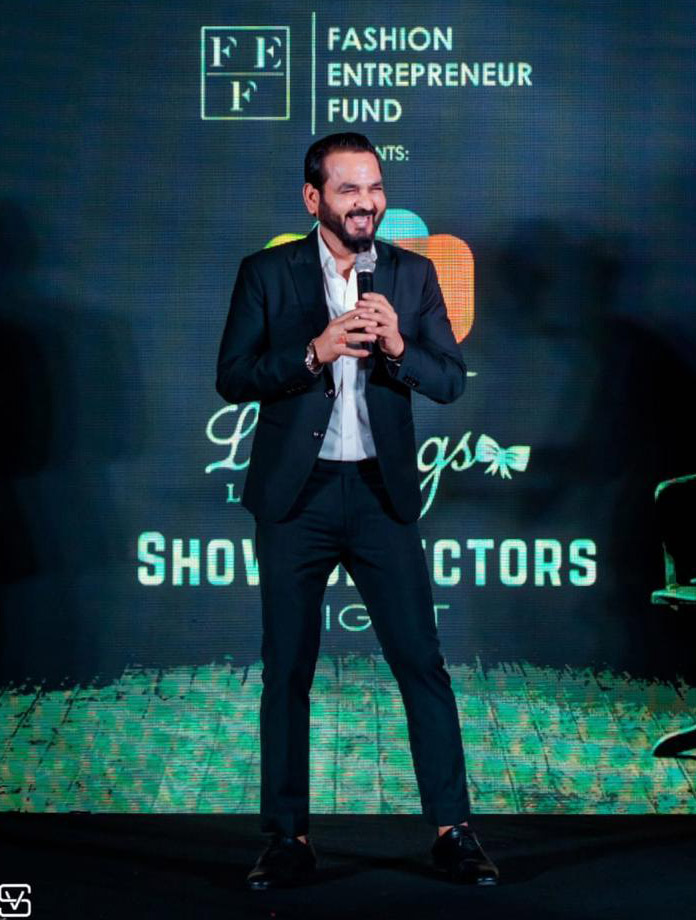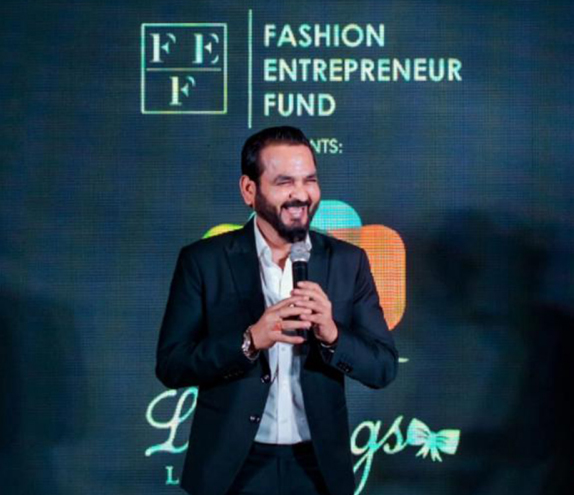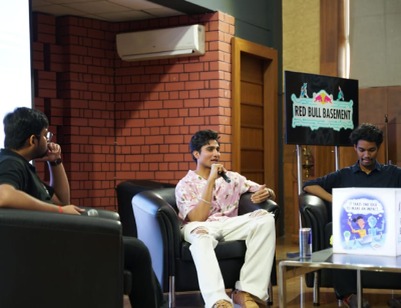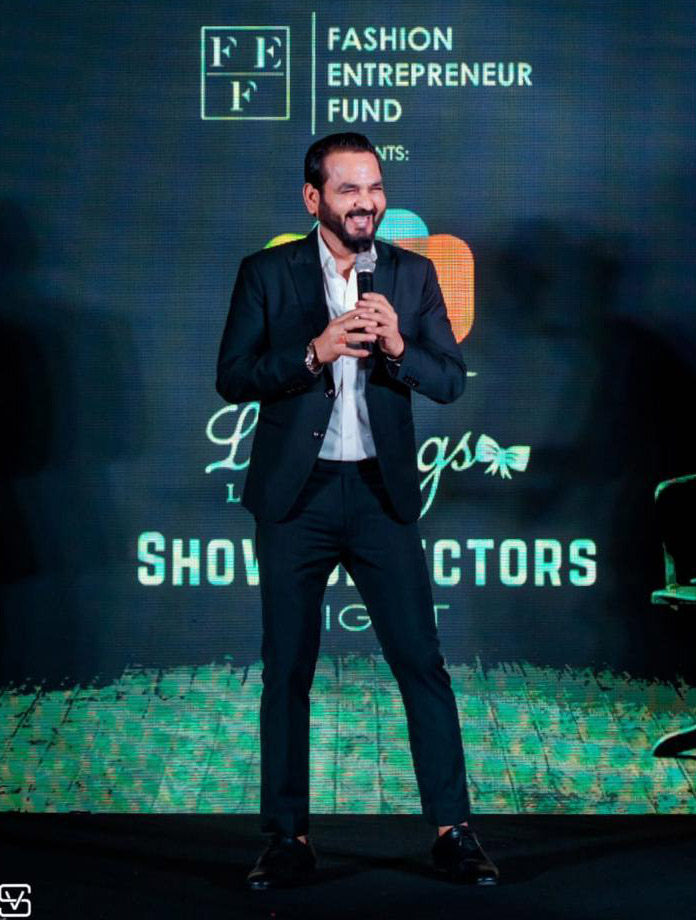I have been in the luxury watch business for over 20 years, and I can tell you that it is not easy. In the early days, it was especially challenging. The sellers did not understand the nuances of the business.
The CEO Page Team (TCP team): From Hospitality “Unlimited Power” by Anthony Robbins, which is a terrific 01 to Luxury Goods. How’s the journey been so far? book about personal development.
Mr. Debraj Sengupta: Hospitality was not my choice, I did it as my parents wanted me to do so. While working in the hotel industry it became clear that my passion was elsewhere. I did not know where at the time, but it was certainly not hospitality. By a stroke of luck, I was hired by Titan and watches interested me immensely. While at Titan, I learned that the Swatch Group was entering India. The Swiss watch industry fascinated me so much that I wished to be a part of it. Here I am now working for various Swiss Brands for over two decades.
TCP team: How do you keep up with today’s fast-paced life?
Mr. Sengupta: I believe that if you love something and are passionate about it, the pace of life does not bother you. When you are truly engaged in what you are doing, time seems to fly by. For me, the key to keeping up with today’s fast-paced life is to focus on the quality of my work, not the quantity. I always try to deliver the best possible work, even if it means working a little bit longer.
I am not a highly organized person, but I have found that starting my day off right helps me stay on track. I usually start with a bottle of water, followed by some exercise. Then, I have tea with my wife and read for an hour. I am currently reading
The true appeal of the Meghalaya root bridges lies not only in their structural phenomenon but also in the experience of crossing them. As I gingerly stepped onto the ground, I could feel the living roots beneath my bases, a sensation both strange and stirring. With each step, I marveled at the adaptability and strength of these natural prodigies. The sounds of rushing water and chittering catcalls enveloped me, creating a symphony that harmonized with the gentle sway of the ground. It was as if time stood still, allowing me to completely immerse myself in the The beauty the moment.
I find that taking some time for myself in the morning helps me to clear my head and focus on the day ahead. It also gives me a chance to connect with my wife and start the day off on a positive note.
TCP team: How difficult is it to market and sell luxury goods in India?
Mr. Sengupta: I have been in the luxury watch business for over 20 years, and I can tell you that it is not easy. In the early days, it was especially challenging. The sellers did not understand the nuances of the business, and we had to educate them on everything- from how to display high-end products to how to present them to clients. We even had to teach them things like wearing gloves and using trays. It took time and effort to develop this mindset among the resellers, but eventually we were able to create a network of highly trained and knowledgeable sellers.
Another challenge we faced was that brands were initially reluctant to open exclusive brand boutiques in India. They were more comfortable with the multi-brand watch sellers, which were very few. So, we had to approach jewellers to sell Swiss brands. This was a new concept for them, and it took months to convince them to try it. Eventually, however, we were able to open stores like Pallazio, Javeri, and Popley’s, who sell luxury watches exclusively.
It was a difficult start, but also an exciting one. We were pioneers in the Indian luxury watch market and were able to help shape the way that luxury watches are sold in India today. I am proud of what we have accomplished, and excited to see what the future holds for the Indian luxury watch market.
TCP team: How do you motivate yourself when the going gets tough, not only in your professional life but also in your personal life?
Mr. Sengupta: I believe that nothing can go wrong for me. I have a positive attitude and always believe that I can achieve my goals. I also manifest what I want, which means that I visualize myself achieving my goals and I believe that it will happen. I write my goals down and I keep viewing them, which helps me to stay motivated.
I also find that it is helpful to have a sense of humour. When things get tough, I try to look at the funny side of things. This helps me to stay positive and keep going.
Here are some other ways that I self-motivate myself:
- Set small goals. When I am feeling overwhelmed, I break my goals down into smaller, more manageable steps. This makes them seem less daunting and more achievable.
- Reward myself. When I reach a goal, I reward myself with something that I enjoy. This helps me to stay motivated and to keep working towards my goals.
- Surround myself with positive people. The people I spend time with have a significant impact on my mood and my motivation. I try to surround myself with positive people who believe in me and support me.
Motivating yourself when the going gets tough can be challenging, but it is definitely possible. By following these tips, you can stay positive and keep moving forward.
Here is a funny story about how I stay motivated:
I was once working on a project that was really challenging. I was feeling stressed and overwhelmed and was about to give up. But then I remembered something my grandmother used to say: “If you can’t laugh at yourself, you’re taking yourself too seriously.”
So, I took a deep breath and I started to laugh at myself. I imagined myself as a cartoon character, struggling to complete this impossible task. And as I laughed, I started to feel better. I realized that the project was not as big a deal as I was making it out to be.
I finished the project, and it was not perfect, but it was good. And I learned a valuable lesson-sometimes the best way to motivate yourself is to just laugh at yourself.
TCP team: What is your opinion on new age marketing tools like digital marketing?
Mr. Sengupta: It is just fascinating, the impact that digital marketing can have on businesses, and I believe that it is a excellent tool that can be used to reach a wider audience, target specific demographics, and measure results.
I am excited to see how digital marketing continues to evolve in the years to come. Overall, I believe that new age marketing tools like digital marketing are incredibly powerful and have the potential to revolutionize the way businesses market themselves.
TCP team: What is one thing that you miss about the hospitality industry and tell us one thing you dislike about the luxury domain?
Mr. Sengupta: I miss meeting people, especially those who are well-travelled and well-read. They have fascinating stories to share, and I miss those interactions.I also miss the sense of community that comes with working in the hospitality industry. There is a shared passion for creating memorable experiences for guests, and it is a great feeling to be a part of that.
One thing I dislike about the luxury domain is the slow pace of adoption of sustainability. I believe that the industry needs to be more responsible for its supply chain, and I would like to see more brands making their products in India. There is a lot of potential for collaboration between luxury brands and Indian artisans, like we saw recently with Dior, and I would like to see more of that happening.
Overall, I enjoy working in the luxury domain. From the hospitality industry, I have learned to create memorable experiences, as we did for guests.
TCP team: How do you see the future of Luxury Brands in India and what is your vision to take Victorinox forward?
Mr. Sengupta: I believe that the future of luxury brands in India is bright. The country is home to a growing middle class with a strong appetite for luxury goods. I also believe that the Indian luxury market is still in its initial stages of development, which means that there is a lot of potential for growth.
My vision for Victorinox in India is for it to be the leading premium lifestyle brand you carry with you every day. I believe that Victorinox products are perfect for the Indian market because they are functional, durable, and stylish. I also believe that Victorinox has a strong brand heritage that resonates with Indian consumers. We have a rapid expansion plan for Victorinox in India.
Victorinox is increasing its footprint in the country following the successful opening of its flagship store in Mumbai’s Palladium Shopping Mall, in May 2022. We currently have 14 stores that house Victorinox shop-in- shops presently with 3 or more product categories, and 5 stores with a single product category. We plan to further strengthen our India presence with 10 more stores in the multi-product and 5 more in the single-product category by the end of the year. For the watch category, we have a strong presence with 150 doors across India currently.
In order to achieve my vision, I plan to focus on the following areas:
- Strengthening our distribution network. I believe that we need to have a strong presence in key cities across India in order to reach our target audience.
- Launching new products that are tailored to the Indian market. I believe that we need to develop products that meet the specific needs of Indian consumers.
- Building brand awareness through marketing and advertising. I believe that we need to raise awareness of the Victorinox brand in India in order to attract new customers.
I am confident that by focusing on these areas, we can achieve my vision for Victorinox in India. I believe that Victorinox has the potential to become one of the leading premium lifestyle brands in India, and I am excited to be a part of that journey.
Here are some other factors that I believe will contribute to the growth of the luxury market in India:
- The rise of the Indian middle class- The Indian middle class is growing rapidly, and this is driving demand for luxury goods.
- The growing popularity of e-commerce- E-commerce is becoming increasingly popular in India, and this is making it easier for luxury brands to reach a wider audience.
- The increasing awareness of international brands- Indian consumers are becoming more aware of international brands, and this is driving demand for luxury goods.
I believe that these factors will contribute to the growth of the luxury and premium market in India, and I am excited to see how the market evolves in the years to come.
TCP team: You also serve as guest lecturer at several premium institutes. Tell us more about this.
Mr. Sengupta: I owe immense gratitude to Mr. Kaleem Khan, a distinguished faculty member at Pearl Academy in Mumbai, for transforming me into a teacher. It was through his invitation to share my personal journey with watches that I realized my ability to engage in meaningful discussions within an intimate setting. Although accustomed to such dialogues, the mere thought of delivering a monologue on stage, with a hundred pairs of eyes fixed upon me, induced perspiration.
However, thanks to Kaleem’s persuasive nature and words of encouragement, I mustered the courage to step onto the stage. That very day, I discovered an additional passion within me—the desire to become an educator and share my knowledge. Since then, it has been an enthralling journey, during which I have had the privilege of interacting with students from esteemed institutions like Welingkars and IIM.
TCP team: What is the common thread you find between the hospitality and luxury industries?
Mr. Sengupta: The common thread that binds the hospitality and luxury industries is the relentless pursuit of exceptional experiences. Both sectors place a strong emphasis on delivering impeccable service, attention to detail, and personalized care to their clientele. Whether it is a five-star hotel or a luxury brand, the overarching goal is to create a memorable and indulgent environment for customers. Both industries understand the importance of anticipating and exceeding expectations, catering to individual preferences, and providing a sense of exclusivity. Moreover, they share a commitment to craftsmanship, quality, and the art of creating moments that leave a lasting impression on guests or customers, elevating their overall experience.
TCP team: Finally, any word of advice for budding entrepreneurs?
Mr. Sengupta: Belief and Passion are good starters but organizing, delegating and learning on the way, will help you survive. We have a huge number of startups that fail, and I believe that though we do not have a dearth of ideas, successfully implementing and keeping them alive for long is a big challenge.











